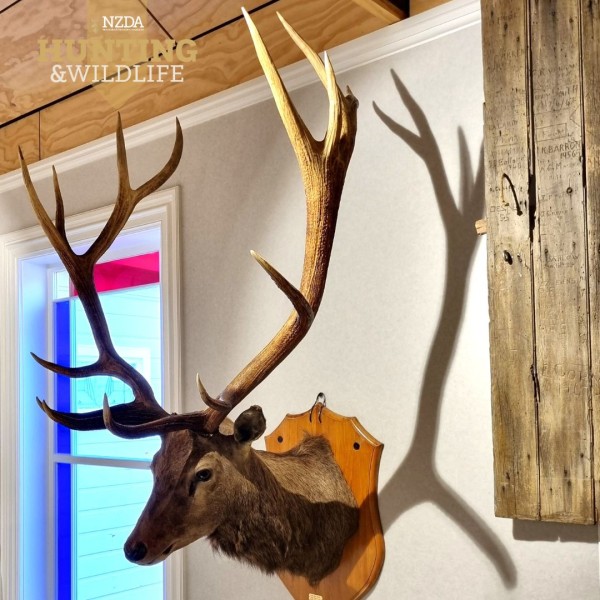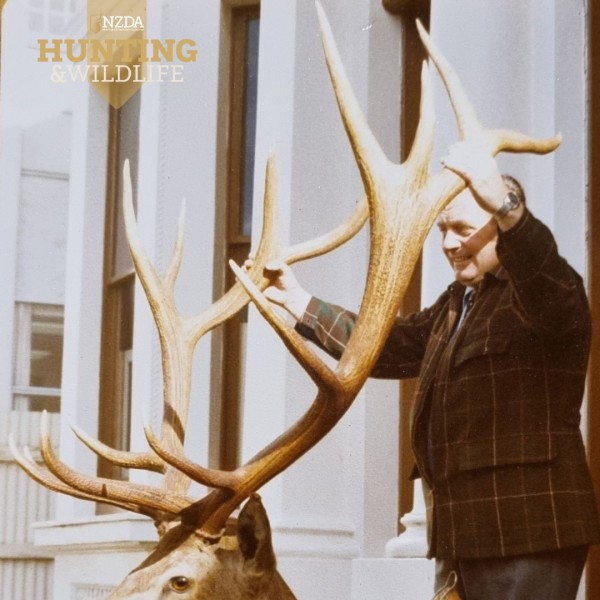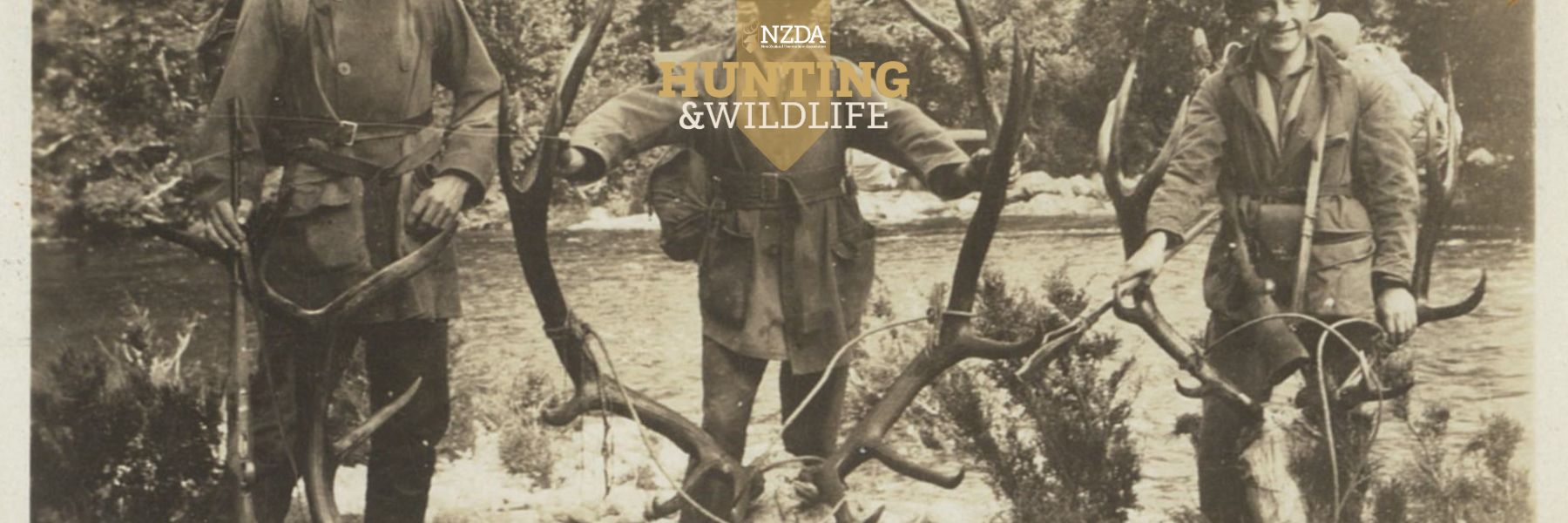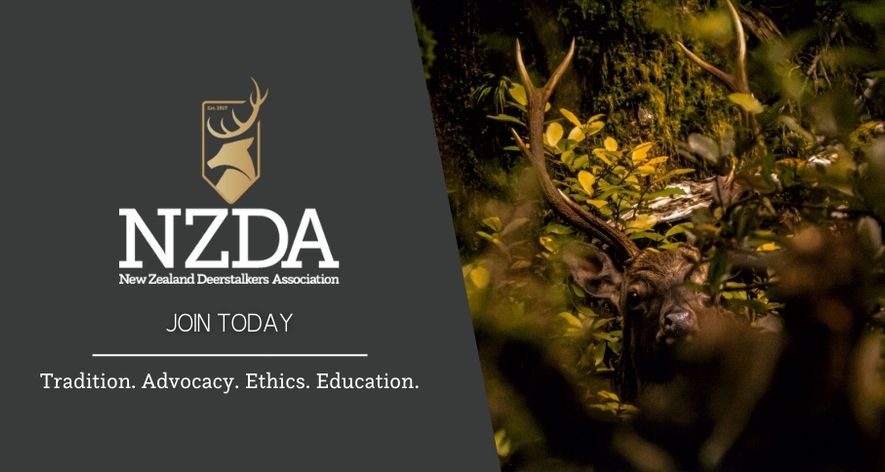Hunting and Wildlife Magazine - Issue 225 - Winter 2024
Words By: Tim Watson, Heritage Trust
Late last year, the family of Douglas McDonald contacted the NZDA National Heritage Trust to request that the Heritage Trust become custodians of one of NZ’s legendary Wapiti trophies. The head was in an Invercargill Social Club, where it had been for some time. While it was valued by the Club, the family thought it would be more appreciated sitting in the NZDA National Heritage Trust Museum - a home befitting its status as the longest-antlered Wapiti Bull taken on public land since it was taken in 1931.

After the typical organisational emails, I headed down to Southland from my base in Wanaka. The head was situated in a steep stairwell, which presented no small difficulty for its removal. With a small crowd of onlookers from the club, the pressure was on!
Ably assisted by my wife Sarah and Southland NZDA branch executive members Scott Hall and Doug Gordon, we got the head down an hour later with only a bit of wallpaper removed (no thanks to the previous installers' liberal use of Liquid Nails!). Safely in the box trailer, we arrived back in Wanaka late that night.
It was truly a family effort. My parents, Steve and Christine, then took the head to Wellington, where the Trustees and Wellington Club Members took over. After a comprehensive cleaning, the mighty head was installed in the Museum.
A big thanks must also go to Gwyn Thurlow, Peter Thurlow, NZDA Wellington Branch, Jenny McDonald, Rob Clark, Noel Bonisch and NZDA Southland President Shaun McKelvie.
The following account of the hunt is taken from Banwell’s epic series ‘Great New Zealand Deer Heads Vol 1’: For some years, this head was recorded as having been taken in the Upper Glaisnock Valley. Those of us who are fortunate enough to have had the privilege of traversing the main divide between the Glaisnock, Edith and Pitt, especially on a fine day, can clearly understand why this was so.
The distance out of the south branch of the Glaisnock, or Midnight Creek as it is sometimes known, down into the basin below and which drains to the Edith Valley, is but a short distance over fairly easy country on Fiordland standards.
Where McDonald took his great bull in 1931 was not far distant from the saddle between the South Glaisnock and the Edith known as the Edith Saddle. This area is also reasonably close to the upper reaches of the Wapiti River, and it would appear, thinking of the spread and movement of wapiti over the proceeding years in retrospect, that it was more than likely that these animals reached this area long before they fully occupied the rest of the Glaisnock Valley.
It would be reasonable assumption to conclude that the animals occupying the Upper Edith and Glaisnock at that time, moved into that area from the Wapiti River area rather than having come up the Edith Valley, although some may have spread from that direction.

This assumption could well be backed up by the fact that several trophies had been taken and sightings of reasonable populations made in the Wapiti River area during the late 1920s. The Glaisnock and its tributaries, on the other hand, did not produce trophies of any consequence until the years immediately following the taking of McDonald's bull, that is, from 1933 onward. The first Nitz trophies from the Glaisnock came from the upper reaches as well.
The Upper Edith and the Glaisnock were stalked by McDonald and party that season and consisted of A.E.W. McDonald, D.A. McDonald, J.W. Colquhoun and J Henderson. They were a Southland party; the McDonald brothers being involved in a well-known Invercargill footwear business for many years.
From the Edith Saddle at the head of the south branch of the Glaisnock, the upper basins of the Edith River were well examined. About ten animals were located approximately two miles down-valley in a basin above the bushline. The weather had closed in, and rain had begun to fall, so an immediate decision was made to set off out and look them over.
About an hour after the party had dropped off the Edith Saddle and were well down into the Edith itself, a bull was sighted below them - not one of those first sighted from the saddle. After sorting out who was to make the stalk, Douglas McDonald dropped away from the party and slowly descended towards his quarry. McDonald had only just disappeared from sight when the remaining members of the group spotted a second bull, much larger in both body and antler, which had suddenly appeared from the far side of the valley.
As luck would have it, Douglas McDonald sighted the new arrival before he had made any positive moves towards the other and stalked and shot him. The smaller bull, alarmed by the report of the rifle, came closer to McDonald, not realising where the hunter was positioned, and a second shot secured him as well. His antlers measured 55 inches in length and 40½ inches in spread. It was, unfortunately, later lost in a fire at Invercargill.
The big bull still holds the New Zealand record for length.”
Electronic or print copies
Members receive an electronic version by email but printed copies can be ordered (for a print and postage fee) which will be delivered to your home.
To order printed copies visit our NZDA Shop at www.nzda.shop
Read Previous Editions Online
Read the historic editions online for free now. Browse here.
Write for Hunting and Wildlife



